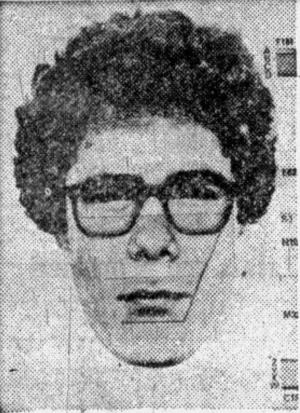
Murders of Eve Stratford and Lynne Weedon - Wikipedia
 en.wikipedia.org
en.wikipedia.org

Murders of Eve Stratford and Lynne Weedon - Wikipedia
| Elizabeth Parravincina | |
|---|---|
 Parravincina, c. January–September 1977 | |
| Born | 1949 or 1950 England |
| Died | September 9, 1977 (age 27) Outside Parklands flats, Osterley Road, Osterley, London, England 
|
| Cause of death | Blunt force trauma |
| Other names | Elizabeth Parravicini, Elizabeth Graham (maiden name)[37] |
| Occupation | Amateur actress[37] |
| Parent |
|

''The site of Elizabeth Parravincina's murder on 9 September 1977, pictured in 2022. As Parravincina walked towards the Parklands flats where she lived (on the left of the image), she was suddenly struck from behind with a blunt instrument
In the early hours of 9 September 1977, almost two years to the day since the death of Lynne Weedon, 27-year-old Elizabeth Parravincina (sometimes[37][38][39][40] spelled Elizabeth Parravicini[41][42]) was murdered only 1 mile away from the site of Weedon's attack.[37][42] The murders occurred in similar circumstances, and it was immediately announced that the killings of Weedon and Parravincina could be linked.[37][43] Just as in the case with Weedon, Parravincina had walked home late at night along the Great West Road before turning right into Osterley Road, where she was attacked.[42][37] Having walked past St Mary's Church and the playing fields of Isleworth Grammar School (now Isleworth and Syon School) she drew level with the driveway of the private Parkfield Housing Estate where she lived, when she was suddenly attacked from behind my a man who hit her with a blunt instrument, as in Weedon's killing.[44][37] Parravincina's skull was likewise instantly fractured and the killer similarly dragged her body away from the street and into shrubbery.[43][40] Although in Parravincina's case there was no sign of sexual interference, detectives believed that Elizabeth's attacker had been disturbed and had fled before interfering with her body.[43]
Similarly to Eve Stratford, Parravincina was blonde and described as "a very striking woman".[43][37] In the aftermath of the murder, the Metropolitan Police themselves said that there may have been a link to Weedon's killing, stating: "There are similarities with the murder of Lynne Weedon which are being considered".[43]
A large police hunt was launched in response to Parravincini's murder, and a photofit picture of a suspect was released, leading to more than 60 calls being made to police by the public.[41] In January 1978 the lead detective, Detective Chief Superintendent Chris Draycott, said that there were "quite a few possibles which are being worked on at the moment".[41]
In 1983 it was revealed that detectives had interviewed a jailed policeman as part of an inquiry into the murders of three women, including Weedon and Parravincina.[40] The policeman, Paul Thomas, had been jailed for five and a half years for sex crimes, and was said to have "led a secret life of kinky sex, terrorising schoolgirls".[40] He reportedly prowled the streets in the area at night wearing a hood and dark clothes.[40] He was also known to have harassed women with anonymous phone calls, as Stratford was in the weeks before she was killed.[40] Thomas was interviewed after his arrest for the other crimes, and was questioned routinely about the death of Elizabeth Parravincina.[40] However, he was reported to have produced "a satisfactory alibi".[40]
In 2007, when the DNA link between Stratford and Weedon's killings was discovered, it was reported that detectives expected DNA to also reveal a link to Parravincina's murder.[45] Scotland Yard were quoted as saying "a serial killer was probably on the loose".[45]''



